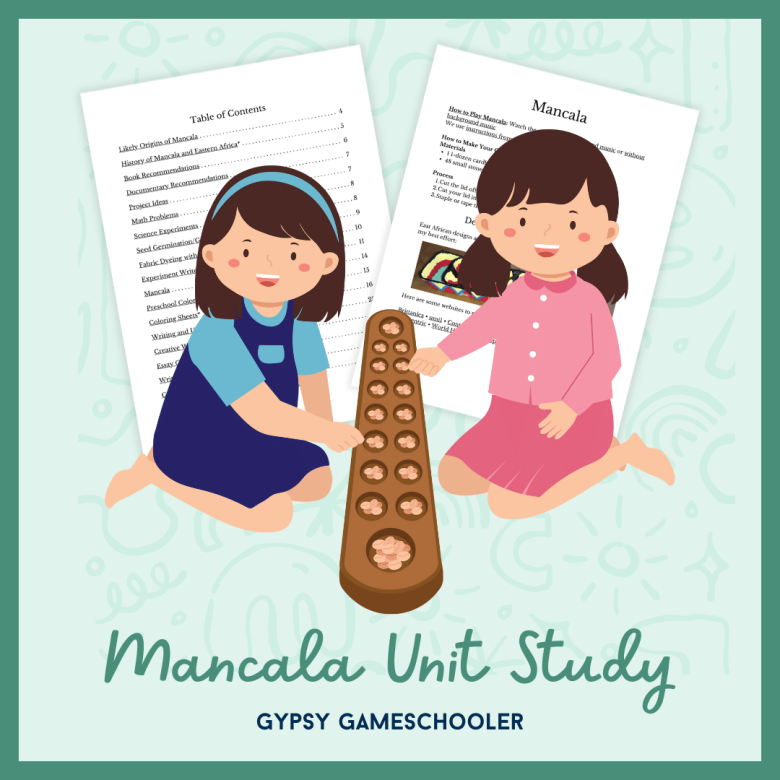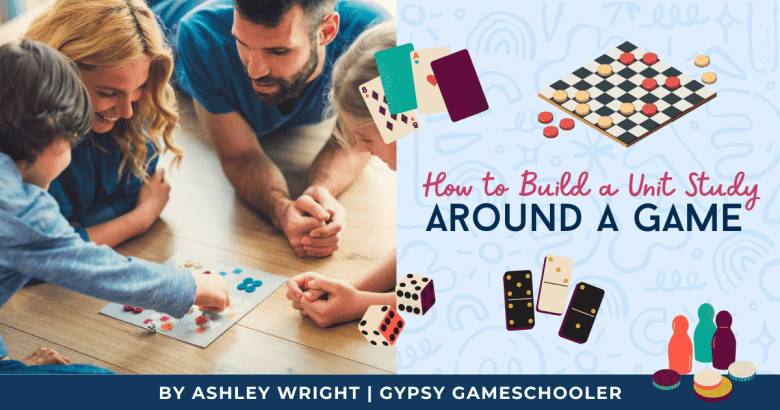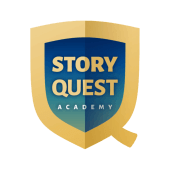By Ashley Wright of Gypsy Gameschooler
When you’re a family that loves fun and games, but you’re also homeschooling your kids, unit studies can be a great lifesaver.
Unit studies can make learning fun, easy, and integrated, as most unit studies incorporate a variety of subjects.
However, purchasing all the unit studies your family will work through can get very expensive! What to do? Make your own, of course!
Step 1: Choose a Game
Actually, you can either choose a game or a topic first; it doesn’t really matter. However, let’s say you choose the classic Ticket to Ride.
Ticket to Ride is a train-route-building game with many variations. The original uses a USA map, but there are many other countries you can choose from.
For simplicity’s sake, let’s pretend you have a copy of the original TTR.
Step 2: Find Related Topics and Subjects
If you start with a topic rather than a game, this step would involve finding related games.
For our example, we’ll notice right away that Ticket to Ride features trains and the US map. So our related topic could be trains and our subject could be US geography.
Step 3: Expand Your Topics and Subjects
Whether you begin with a game or a topic, Step 3 remains the same. We want a unit study to encompass a variety of subjects and leach into some different (but still related) topics.
For our example unit study centered on TTR, we might explore the history of trains, or the history of travel altogether.
- The physics of trains can be explored.
- How do they work? How are they powered? Why are tracks necessary?
- What are the social impacts of train travel?
- How have trains impacted Western Expansion in the US?
- How have they impacted some other countries?
- What do trains mean for the transport not only of people, but also of goods?
- How do they impact different socio-economic levels?
- How did trains lead to the development of time zones?
At this point, we are just collecting questions and different directions we can go with our topic. As you can see from our questions above, a simple topic like “trains” can readily be expanded into the sciences and social studies.
Step 4: Collect Resources
This is my favorite step! Looking at the questions you have collected and the associated topics and subjects, what resources can you use to explore them?
A wide variety of resources that can appeal to any learning style and a wide variety of ages are where unit studies really shine. If you have kids of multiple ages or skill levels, your resources can be custom-picked to cater to them.
Picture books and early readers for younger kids; coffee table books (you know, those big ones with beautiful pictures) for everyone; chapter books and dense reference books for older kids.
But, it doesn’t stop with just books. Find documentaries, audiobooks, podcasts, music (yes, there are songs about and featuring trains), websites, YouTube videos, foods (what foods have been served on trains?), museums, outings (have your kids ever ridden a train? Now is a great time to remedy that!), and other games, too!
By including a wide variety of resources, you are sure to hit all your kids’ preferred learning styles and help develop ones they struggle with.
By including games, outings, and other experiences, you are sure to appeal to a wide variety of ages. (I’ve always said my family learns best through our stomachs!)
Step 5: Explore, Learn, and Expand!
As your whole family explores the resources you have collected, you will naturally encounter and ask more questions.
Exploring the physics of trains can lead to learning about how coal is mined and the social implications of coal mining, as well as ecological impacts, which can lead to studying different biomes and habitats, conservation efforts, and the impacts of other human activity on wildlife.
As your family explores resources, you might encourage your students to write about the topic. This could be either creative writing or expository.
Do they want to use their writing to explore the complex social impacts of trains (if we stick to our example)? Or maybe write an exciting, action-packed story of a train heist?
You can also use your unit study as a base topic for exploring word problems in math. Speed, telling time, creating mock train schedules, discussing how many people can be transported on a train if it has so many cars that can each hold a certain number of people, the economy of train ticket prices, calculating how much coal would be needed to transport a train a set number of miles and therefore how much coal is needed per person … You get where I’m going with this, right?
Use your topic to have your kids design their own science experiments. Remember, the important thing about a science experiment is eliminating variables so you have just one you are testing. (Google and ChatGPT can be great sources of ideas here!)
For trains, your students could test potential wheel shapes. More advanced students could figure out the energy costs of digging a tunnel versus taking trains up and over mountains.
Every topic can be used to explore the four core subjects of math, science, social studies, and English/language arts.
In addition, any topic can be an inspiration for exploring the arts (a variety of them!) Movies, plays, music, fiber arts, dance, foods, drawings, paintings, and sculptures) and many other subjects.
And all this started with a game.
Check out this fun diy game study from Ashley!

Mancala Unit Study! Would you like to try a pre-built unit study to help you create your own unit studies? This Mancala Unit Study is $10 off with this coupon code and includes history, geography, science, ELA, and art, all around Mancala! A variety of resources are included for every age! Coupon Code: HQSPRING25 $4.97
Read More!
- Log in to post comments







